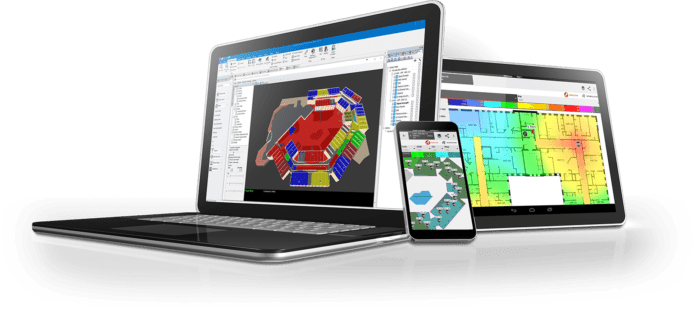Traditionally, development kits and advanced toolsets allow designers to quickly and efficiently leverage new technologies. Integrating and aggregating In-Building wireless architectures is one of those areas where development expertise can help engineering teams rapidly and seamlessly adopt new technologies and bring them to market in a timely fashion.
This is the case with the release of iBwave Design Suite of tools for In-Building wireless network design. The robust suite of tools supports the latest in wireless protocol deployment and contains features that make leading-edge capabilities easy to design into your products.
If statistics bear out, in the next five years, wireless device traffic will rise at a compound rate of 45% annually. Yet, 80% of mobile communications happens indoors. What’s more, facilities like stadiums, travel terminals, hospitals, hotels, and others need effective In-Building architectures to handle reliably the traffic that they will need to pass.
As the need increases for more devices and more data communications in a smaller area, it becomes clear that more layers of protocols and down converters are just getting in the way. Just like the backbone industry has finally learned, flattening out the network provides better performance. The same is true with In-Building networking.
And things are heating up. For starters, the transition to 5G will be a game changer. Smaller more granular 5G transceivers make it feasible for mass deployment of 5G transceivers and routers in-house, in-building, or even in an apartment. This translates to faster, more direct wireless linking from individual locations to the high-speed backbone at low cost and simplified architecture.
Building automation, for example, is implementing wireless connectivity to the sea of the Internet of Things (IoT) that everyone will ‘”need”. While some may think it frivolous to have a Bluetooth connected refrigerator to the Internet, like it or not, global connectivity of almost everything is coming.
One reason is energy management. Already industrial facilities adhere to Peak Demand Load constraints to assure lower energy costs. Commercial, civic, and residential facilities too will need to adhere to this. And it’s not so bad if done intelligently.
For example, a refrigerator is running, and a heater needs to kick on. This will push real-time energy demands beyond a peak threshold limit. With intelligent connectivity, the fridge can shut off for a while until the heater is done. Then turn on the motor and compressors once again. Everything gets serviced, in time.
Boosting wireless connectivity speeds is the ever-evolving LTE protocols. LTE actually stands for Long Term Evolution ‑ and new subspecies are starting to crawl the earth.
As LTE Advanced (or LTE-A) evolves, it brings to the forefront true 4G speeds, two to three times faster than present LTE, and, boasts fewer dropped connections and reconnect latencies for both stationary and mobile stations. This means better reliability when more devices are connected simultaneously.
Also pushing wireless communications further indoors is the adoption of In-Building wireless protocols such as Citizens Broadband Radio Services (CBRS) which uses a 150 MHz broadcast band in the 3.5 GHz band that was formerly assigned to radar. The new reallocation means there is room for designers and companies to leverage the new and emerging wireless protocols.
The iBwave Design Suite Release 10 offers a complete solution for design engineers, allowing them to construct converged networks using the latest wireless and cellular technologies.
To Learn more about how iBwave’s Suite of products help bring connectivity to life, click here

